ProGrade Digital’s 512GB CFast card has the fastest write speed we’ve ever tested
posted Thursday, February 15, 2018 at 9:01 AM EDT
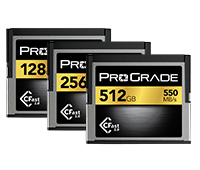
Memory cards aren’t sexy. They’re not the part of a photographer’s kit that makes a photo better, and they don’t get a lot of praise. Honestly, the only times you really hear a photographer talk about a memory card is when they have a failure, or if something gets corrupted. If something goes wrong, you can bet a photographer has a story about losing data and how much it messed with them.
Unfortunately, when a card is working and doing its job, you never hear about it. Making reliable memory is kind of thankless like that, so we do our best to highlight cards that actually do their jobs well so that you know what card you can trust the next time you need memory.
It’s why so much of a memory card company’s success is based on the prior collective experience of the masses. Photographers go with who is the most reliable in their experience and on the “good word” of their closest friends. It’s also why newcomers to the market have the toughest time. In order to “get in” to this rather closed circle, you’ll see either extremely low prices, or extremely snazzy marketing.
ProGrade Digital offers neither of these things, with a rather tame name and branding and a “competitive” price to match. It’s no discount product, which means the expectation of quality is going to be rather high.
At 512GB, the ProGrade Digital CFast card is the highest capacity CFast available, and the only of-note new card launched since Lexar came out with the first of its kind in the middle of 2017 (not long before being sold by Micron to Chinese memory company Longsys). Having even beaten SanDisk to this one, ProGrade is making a splash in the industry by touting that they are striving to not only have the best reliability (they tell us they’re shooting for 0% failure rates on these cards), but also the best performance at the highest capacity currently on the market.
That’s a lot of “bests” for a company no one has ever heard of.
To see just how good their card is, we first ran a simple BlackMagic speed test on it, the now-impossible-to-fine Lexar 512GB CFast card, and the SanDisk 128GB CFast just to see how it stacked up. Here are the results (all tested via a Thunderbolt 2 CFast reader):
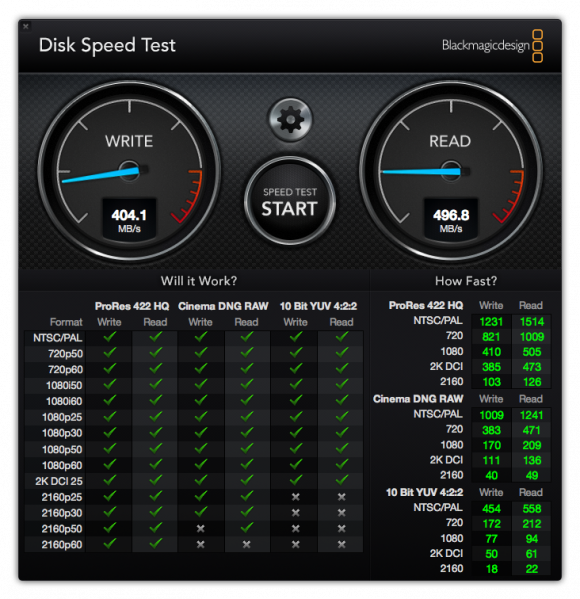
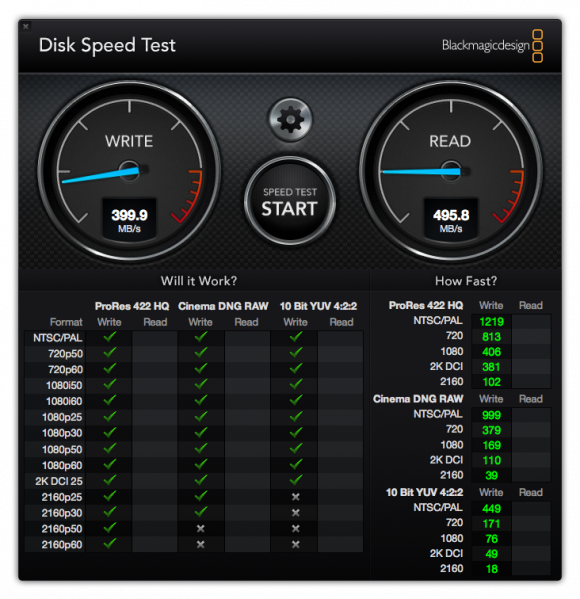
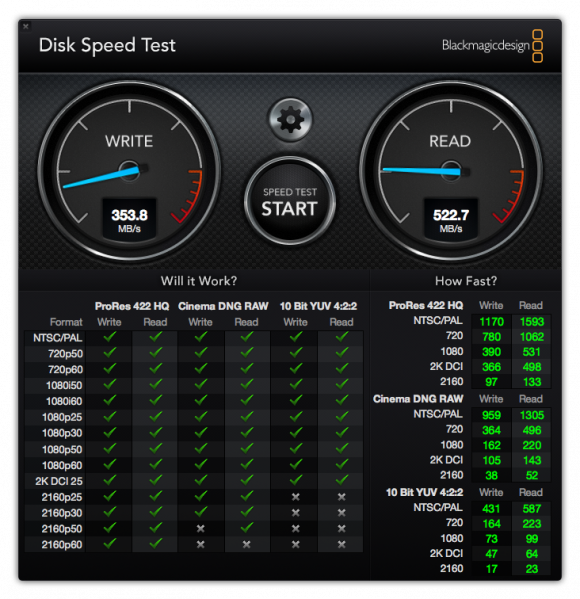
Though SanDisk takes the win when it comes to read speed, the ProGrade came in first in write speed by a good margin, especially compared to the SanDisk. It’s overall speed is pretty much on par with the old Lexar, though it is a faster to both read and write and as such, based on this data, arguably a better overall card.
Comparing it side by side with the SanDisk is a bit trickier. Though it’s not nearly as fast to read, it’s much, much faster to write than the SanDisk. Added to that is the fact that it’s double the capacity of the SanDisk, and you would be hard pressed to not select the ProGrade over the SanDisk if given the choice here. With cameras that accept CFast, having a good read speed is nice, but having a fast write speed is paramount. ProGrade easily wins that here.
If we look at the Speed Test specifically for the 10 Bit 4:2:2 read/write speed in NTSC/PAL, the numbers more accurately match ProGrade’s promise of 550 MB/s, as the ProGrade is writing at 454 MB/s and reading at 558 MB/s in this category.
To get a bit more granular, I also ran all three of these cards through a test that logs a file onto each card individually until the entire volume is full. While it does that, it also tracks the read/write speed of that file. Over a whole volume, we can then track how well a card keeps its speeds during an actual "real world" sort of scenareo.
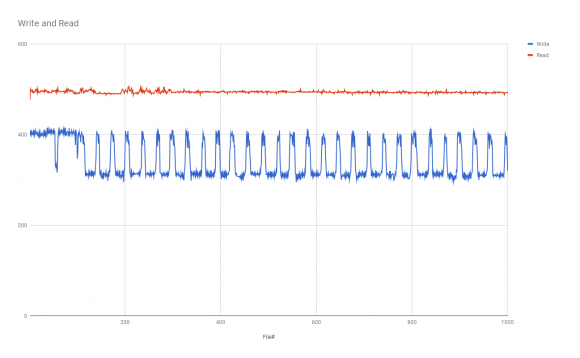
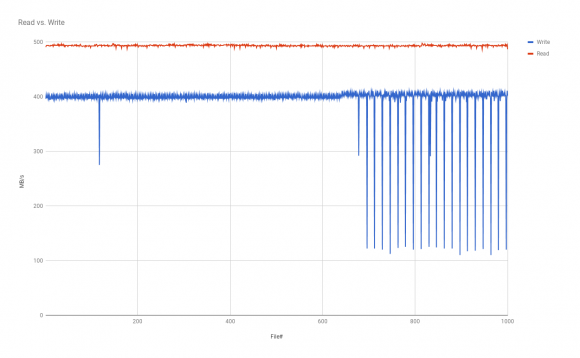
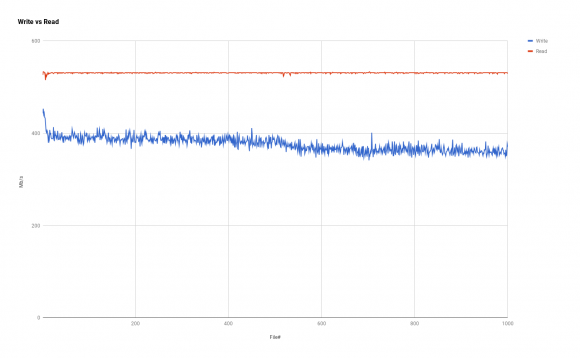
The SanDisk has the most "consistent" graph, though it does dip slowly in write speed overall as the volume fills. Read speed is very consistent, as it was for all three cards. The Lexar looks good most of the way, but then starts to vary speeds wildly as the volume fills resulting in some pretty steep valleys. As for the ProGrade, it's pretty consistent in terms of how much the speed varies over the entire volume filling. You'll see a good increase in max write speeds for a time, before they dip by about 75MB/s for a bit. This is much more forgiveable than losing almost 250 MB/s like the Lexar does, but it is disappointing to see that it doesnt' quite keep up with the consistency of the SanDisk. The dips in speeds we are seeing aren't super dramatic and still outpace the MB/s requirements of something like a 1DX Mark II, but they are there.
Is this a big deal? That's hard to definatively say. Most cards will drop below their rated speed at some point, briefly. If you put a slow card in a camera, it will generally record for a few seconds before automatically stopping, but you do get to keep a short amount of video thanks to the camera's buffer. The size of a buffer changes depending on the camera. So in many cases you won't actually see something like those speed dips in either the Lexar or the ProGrade actually equate to something happening while recording. However, if you did happen to notice any skipping in a video clip, especially when writing something as beefy as Motion JPEG, this could be a cause.
ProGrade has instituted a very non-standard practice with their cards: they go through incredible testing before being packaged. The way the industry generally works, whether it’s USB flash or a card, is you do all the testing when you do the design. You beat the heck out of the base level design, like the controller, the firmware, etc. You run it through temperature extremes, bend and twist, do everything to it, with lots of benchmarking. Then, the logic from that point is "Well if I use the exact same component group, built exactly the same way when I did all the hard testing, then I need to only do a simple functional test." They take it off the line once it is finished being produced, and quickly test read and write, and then send it out 45 seconds later.
ProGrade is doing 100% testing of every memory location in every card at the factory. That can take 45 minutes vs. the aforementioned 45 seconds. With these cards, every memory location has been written to at least once in a controlled factory location. This is something unique to ProGrade, and should result in extremely low card failures.
Additionally, in the off chance there is a problem with a card, ProGrade has individually serial numbered each one. With that unique serial number, ProGrade can tell when and where a card was produced, log any similarities among other cards in that batch, and more quickly figure out the problem.
They are the first memory card company I've ever interacted with who is going through that much robust testing for each and every memory card they make. It's kind of crazy.
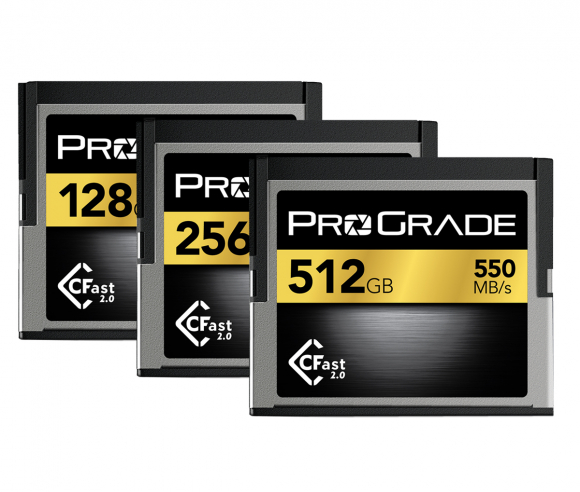
What I liked:
- Fastest write speed of any CFast on the market
- Works with Canon DSLRs
- Massive capacity at 512GB
- Dips in write speeds aren't too dramatic
- 3 year warranty
- Incredible testing parameters for each card, and unique serial IDs create a high quality, low failure rate product and quick diagnosis of any issues
What could use improvement:
- Read speed slightly lags behind SanDisk 128GB CFast
- Noticeable peaks and valleys in max write speeds while the volume fills
- Though it's in line with the industry, these cards are very expensive at $700 each
Though they have no real brand recognition due to the fact they just announced themselves as a company today, as far as testing and reliability goes for their product... they're solid. With the fastest write speeds available on the market and likely the most viable (and reliable) 512GB CFast card available, it's hard to find anything to really gripe about with ProGrade Digital's product. When you combine their internal promises for quality and how they've backed it up with their individual serialization of each card, I personally feel very comfortable relying on their memory for my important shoots.